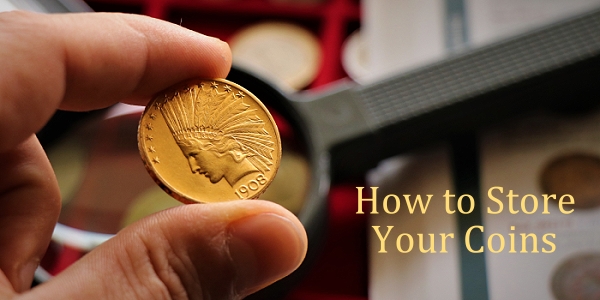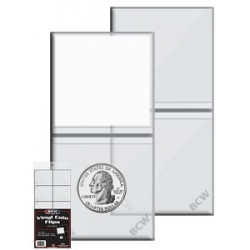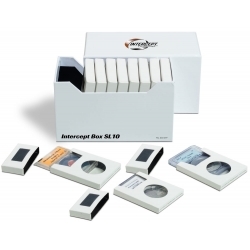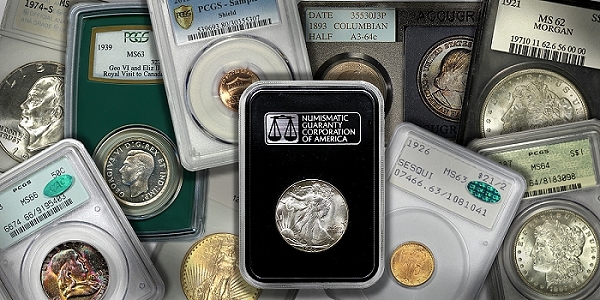 Coin Collecting Tips by Peter Mosiondz, Jr. …..
Coin Collecting Tips by Peter Mosiondz, Jr. …..
Now that you own some nifty coins, how will you keep them safe and store them? In our previous installment we discussed the proper way to handle coins so as to keep them free of potential damage. Now we have to consider keeping those coins in our collection and doing so again so as not to allow any harm to befall them.
Whether you have made some nice circulation finds or purchased some coins from your friendly dealer, you will need a method of preserving them from impairment.
Damage can occur in many ways. It is more than just having two or more coins rubbing together or making contact with each other in your Coin Collecting, which in itself is a no-no. While this type of damage results in scratches, nicks or gouges, other types of harm can come to your precious coins as well.
 Other forms of damage in Coin Collecting include corrosion, fingerprints (especially on almost uncirculated or uncirculated coins), spotting from airborne moisture particles, and dark toning to name but a few examples. Not all toning is considered bad however. Some natural toning such as a blush of champagne or gold colour on a silver coin can be breathtaking to behold. The damage to which we refer is often the result of a coin being exposed to certain atmospheric elements or from improper storage. Perhaps the owner tried to clean it somehow with a solvent not recommended for coins. In any event, a coin can turn a downright ugly black or some other dark colour. Dipping such a coin often results in further impairment. I am not an advocate of dipping or cleaning coins.
Other forms of damage in Coin Collecting include corrosion, fingerprints (especially on almost uncirculated or uncirculated coins), spotting from airborne moisture particles, and dark toning to name but a few examples. Not all toning is considered bad however. Some natural toning such as a blush of champagne or gold colour on a silver coin can be breathtaking to behold. The damage to which we refer is often the result of a coin being exposed to certain atmospheric elements or from improper storage. Perhaps the owner tried to clean it somehow with a solvent not recommended for coins. In any event, a coin can turn a downright ugly black or some other dark colour. Dipping such a coin often results in further impairment. I am not an advocate of dipping or cleaning coins.
Coins can be placed singly in a variety of holders or as sets in an album. Let’s take a look at a few of the more popular Coin Collecting methods of storing coins.
Coin Collecting HOLDERS
The easiest way to store coins is the use of two-by-two-inch Mylar® holders. This type of holder permits you to examine both sides of a coin and in such a manner that a fingerprint can not be left on the coin’s surface. These holders are available in sizes to accommodate every denomination of coin.
 Select the size that matches the coin. In other words, don’t use a quarter-sized window for a ten-cent coin. You don’t want the coin to move or slide about in the holder. The very clear material that is designed to protect the coin can also scratch it a bit if a coin rubs against it too much.
Select the size that matches the coin. In other words, don’t use a quarter-sized window for a ten-cent coin. You don’t want the coin to move or slide about in the holder. The very clear material that is designed to protect the coin can also scratch it a bit if a coin rubs against it too much.
You can purchase two-by-two’s and other supplies through CoinWeek sponsor Wizard Coin Supply.
Holding the coin between forefinger and thumb, place the coin in the middle of the holder on the darker side. Fold the holder over very carefully and begin the stapling process. I do the bottom staple first, followed by each side. Do not staple too close to the coin. Try to be about an eighth of an inch or so away from the centre. You don’t want to inadvertently staple the coin and you don’t want a problem removing the coin from that holder later on. Also, remember to flatten down the staple ends in order that they are less likely to cause damage elsewhere.
 Paper, or Kraft®-type, two-by-two-inch Coin Collecting envelopes offer an inexpensive means of storing circulated coins. I would not recommend them for uncirculated pieces because over time toning will occur. The sulfur content of this type of paper is not very friendly to new or almost new coins, especially copper or silver. Circulated coins usually fare pretty well in these envelopes but you still need to examine them every so often, especially for the silver ones.
Paper, or Kraft®-type, two-by-two-inch Coin Collecting envelopes offer an inexpensive means of storing circulated coins. I would not recommend them for uncirculated pieces because over time toning will occur. The sulfur content of this type of paper is not very friendly to new or almost new coins, especially copper or silver. Circulated coins usually fare pretty well in these envelopes but you still need to examine them every so often, especially for the silver ones.
Another Coin Collecting detriment to using this type of envelope is that you are unable to view the coin without first removing it. Constant removal can only result in the possibility of causing some damage over time. Today I use these envelopes only for my duplicates. These are coins I don’t have to keep removing to examine and admire. Plus the envelope gives me plenty of room for the coin’s description and grade. There is a small polyethylene envelope that accommodates the coin and then it can be inserted in the paper envelope. I am not certain if these are chemically inert or not. If they are, it would seem to be a plus. It would be advised to get a guarantee from the manufacturer.
The so-called Coin Collecting “flips”, also in a two-by-two-inch size are another choice. These allow the viewing of both sides of the coin as well as the edge. The flip is divided into two sections. The front section is for the coin while the back section is reserved for the paper two-by-two card on which you may enter the date, denomination, grade and any other information that you require.

Be sure not to use the soft and very pliable flips that contain PVC (polyvinyl chloride). The oils will eventually ruin the coin, resulting in a greenish slime that is almost impossible to remove without further damage. Many of the coins you purchase from a dealer or at auction will arrive in these soft flips. This is OK for very short term storage. Most dealers, to their credit, will advise you to remove the coin from this type of holder as soon as possible to prevent future damage.
I recommend the use of the inert polyethylene terepthalate (also known as Mylar®) flip. The characteristic of this flip is that it is rigid and hard to the touch.
Once your coins are housed in the holder of your choice, you may want to place them in a storage box or a 20-pocket page made especially for these holders. There are so many choices available to the collector that it would be pointless to try to describe them here. Consult your dealer.
Other types of rigid plastic holders are manufactured by several well-known firms. Again, see your dealer for a selection.
Encapsulated coins in rigid, inert holders, also known as “slabs” are the rage today. In addition to providing a measure of confidence that one does not possess a counterfeit or altered coin, the holder provides storage safety. There are specific products mad for holding an assortment of these slabs.
Coin Collecting FOLDERS AND ALBUMS
Collectors with a particular goal in mind, a small cent collection for example, may prefer to house their collection in a folder or album made especially for that series.
Coin folders are an economical way to begin collecting. These are the type of holder that requires you to “push” the coin into its slot. There are no plastic slides to hold the coin in place. Do not use a finger to push the coin into its tight fitting hole. Use a cotton cloth or cotton gloves instead. Fingerprints are not welcome on collectible coins.
 Consider that the coin is in a sulfur-based environment. Tarnish and deep, unattractive toning will most likely result in time. And, please do not use this type of folder for uncirculated coins. They are fine to start a collection or to house a low-grade collection pulled from circulation but not so OK for more valuable and higher grade coins.
Consider that the coin is in a sulfur-based environment. Tarnish and deep, unattractive toning will most likely result in time. And, please do not use this type of folder for uncirculated coins. They are fine to start a collection or to house a low-grade collection pulled from circulation but not so OK for more valuable and higher grade coins.
Coin albums are a much better way to keep a collection. Insist though on inert slides so as to remove fears of discoloration. Both sides of the coin can be viewed and enjoyed without the need to remove the coin. Remember, the more a coin is handled the greater the chance for some type of damage. Be sure to use cotton gloves or a small piece of cotton when inserting your coins in an album.
Finally, be sure to store your collection in a dry, climate-controlled environment. Humid conditions should be avoided. I use a small safe in my home office for the not so valuable coins. Inside the safe is a large container of silica gel which aids in controlling moisture. The better coins are kept in the bank. This leads us to our next discussion – safety measures for a coin collector.
Until next time, stay well and enjoy your hobby.





Need more information on coin n currency collection